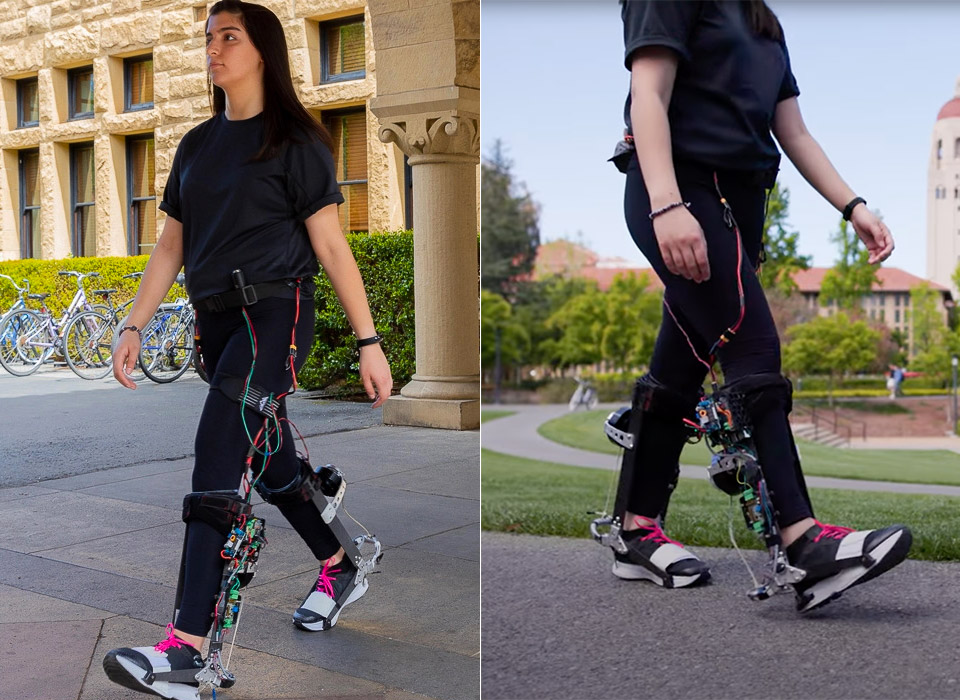
Researchers from the Stanford Biomechatronics Laboratory have developed a boot-like exoskeleton that increases walking speed and reduces effort outside of controlled environments. Put simply, it consists of a motor that works in conjunction with calf muscles to give wearers an extra push with every step, thanks to a machine-learning-based model that was trained through years of work using emulators.
When used on a treadmill, this exoskeleton provides twice the energy savings of previous generations, which translates to significant energy savings and walking speed improvements in the real world. The ultimate goal is for this device to help people with mobility impairments, especially older people, move throughout the world as they like. It accomplishes this by applying torque at the ankle, replacing some of the function of the calf muscle. Unfortunately (or fortunately), this exoskeleton won’t turn you into a giant robot like the Skeletonics Suit.
- Powerful Motor & Battery: E22 equipped with nominal 300 motor travel range of 13.7 Miles, Speed of 12.4 mph and W. capacity 220lbs. Suitable for city...
- Safety and Comfort with Segway Adults Scooter: Dual Braking system to ensure your safety
- 9" Dual Density Tires: It can absorb each small bumpy of city street to upgrade your commuting and provide MAX comfort.
This exoskeleton personalizes assistance as people walk normally through the real world. And it resulted in exceptional improvements in walking speed and energy economy,” said Steve Collins, associate professor of mechanical engineering who leads the Stanford Biomechatronics Laboratory.







